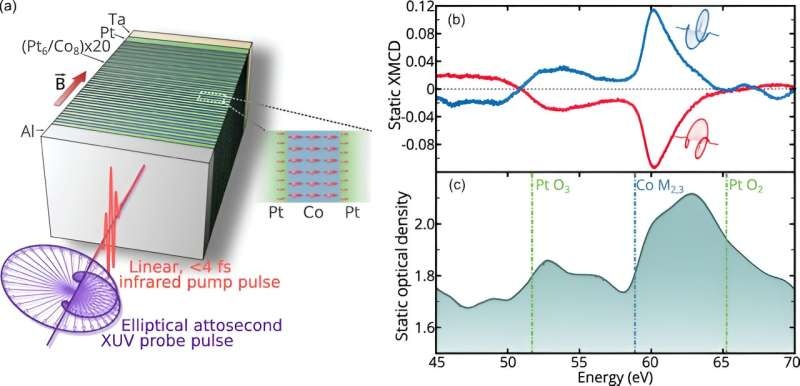An international team of physicists has made a groundbreaking discovery, revealing how ultrashort laser pulses can be used to directly generate spin currents. This revolutionary finding paves the way for faster and more efficient electronic devices, potentially revolutionizing the world of technology.

Spinning Electrons for Faster Tech
Spin currents are a unique type of electrical flow where the electrons are organized by aligned spins. These spin currents hold the potential to lead to electronic devices that run faster and more efficiently, ultimately reducing energy costs.
Previous efforts to generate spin currents have typically involved using lasers to create the spin, though this process has proven to be inefficient. The challenge has been that the applied lasers generate electrons with mixed orientation, requiring a filtering process to isolate the desired spin direction.
However, the international team of researchers has now discovered a groundbreaking solution. By using a linearly polarized laser pulse and a circularly polarized probe laser, they were able to directly generate spin currents with electrons in the same orientation. This represents a significant advancement, as it eliminates the need for complex filtering processes and allows for the direct creation of usable spin currents.
The Secret Lies in the Layers
To achieve this remarkable feat, the researchers created a target block composed of 20 alternating layers of platinum and cobalt, each just a single nanometer thick. They then placed the block in a vessel and applied a strong magnetic field from the bottom to the top, aligning the spins of the electrons in both the platinum and cobalt layers.
Next, they fired a polarized laser at the block using short pulses. Immediately after, they directed a circularly polarized probe laser at the same spot. This combination of lasers resulted in a sudden shift in the magnetic ordering within the layers, altering the degree of magnetism.
The researchers were able to observe this shift in magnetic ordering occurring within a mere few femtoseconds – that’s faster than any other technique currently available. By using theoretical calculations to analyze the electron interactions, the team was able to confirm that their experimental results were in line with their predictions.
This groundbreaking discovery represents a major step forward in the quest to harness the power of spin currents for practical applications. The ability to directly generate these currents using ultrashort laser pulses opens up a world of possibilities for the development of faster, more efficient, and more energy-saving electronic devices.
Conclusion
The findings of this international research team have the potential to revolutionize the world of technology. By unlocking the secrets of directly generating spin currents using ultrashort laser pulses, they have paved the way for a new era of electronic devices that can run faster, more efficiently, and more cost-effectively. This breakthrough could lead to advancements in a wide range of fields, from computing to communication, and beyond. As the researchers continue to explore the full potential of this technology, the future of electronic innovation has never looked brighter.
